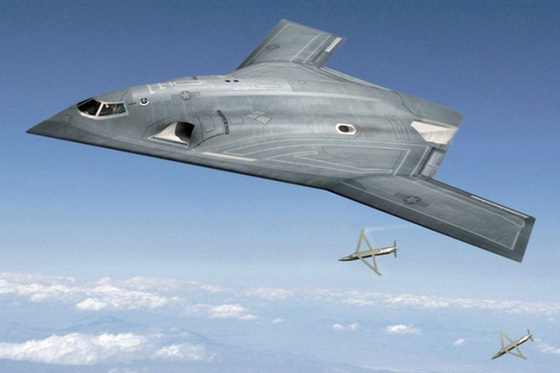New Look Strategies, LLC
Monday, February 29, 2016
Next Steps for Japan-U.S. Cooperation in Space
In this paper, Zack Cooper and I look at next steps for cooperation between Japan and the United States in space given the increased importance of space-based capabilities to the alliance and the proliferation of threats, both kinetic and non-kinetic. We found that non-kinetic ASAT weapons are particularly worrisome because they could be used prior to the initiation of overt military conflict, effectively creating a “grey zone” dilemma in space where intentions are ambiguous and the risks of escalation and miscalculation are high. We recommend increased cooperation on space situational awareness, on-orbit servicing, and hosted payloads for military missions.
Thursday, February 18, 2016
Discussing the FY 2017 Budget Request on C-SPAN
I joined Washington Journal host Kimberly Atkins to discuss the President's FY 2017 defense budget request and what last year's budget deal means for the debate over defense spending in Congress this year.
Friday, January 29, 2016
Why I Stopped Using the “S” Word…and You Should Too
It comes in many forms: sequester, sequestration, and (my personal favorite) sequestrable—as in “sequestrable budgetary resources.” Everyone dislikes the “s” word, and for good reason. But I am increasingly dismayed at how the “s” word gets thrown around carelessly by senior policymakers as a way of avoiding a more difficult discussion. Here are my thoughts on how we can talk about the BCA budget caps more accurately and realistically.
Wednesday, January 27, 2016
Defense Modernization Plans through the 2020s: Addressing the Bow Wave
Since the enactment of the Budget Control Act (BCA) of 2011, much attention has been paid to the near-term effects of budgetary constraints on national defense. What has received less attention are the looming budgetary challenges defense faces beyond the BCA budget caps and the Defense Department’s five-year budget planning horizon. Many weapons programs will be at or near their peak years of funding requirements at roughly the same time in the 2020s, creating a modernization bow wave. This report details the plans for major acquisition programs over the next fifteen years and explores the complicating factors that may make the situation more problematic for policymakers. It analyzes a range of options to mitigate the bow wave, including increasing the budget, cutting additional force structure, and making trades among major acquisition programs. The report finds that while none of the choices available are easy, it provides an opportunity for the new administration taking office in 2017 to better align modernization plans with defense strategy.
Monday, December 21, 2015
Defense News Roundtable on 2016
Last Sunday I joined my colleagues Mackenzie Eaglen, Loren Thompson, and Leo Shane for an end of the year roundtable looking ahead to what we can expect for defense in 2016. Watch the full show here.
Monday, November 30, 2015
Discussion with DoD Comptroller Mike McCord
I hosted DoD Comptroller Mike McCord at CSIS for a public discussion on the state of the defense budget after the Bipartisan Budget Act of 2015 and progress on developing the Department's FY 2017 budget request.
Wednesday, October 28, 2015
What the Budget Deal Means for DoD
In this DefenseOne op-ed I summarize what the new budget deal means for defense. In my view, this is about the best deal DoD could have hoped for in the current budget environment. While defense is still $5 billion short of the President's request, it gets $33 billion than the BCA budget caps would have allowed without this deal.
Tuesday, October 27, 2015
Seven Ways to Make the LRS-B Program a Success
Tuesday, September 29, 2015
Rules of Engagement Needed for Space

As anti-satellite (ASAT) capabilities proliferate, the United States must prepare for a future conflict that could extend into space. A range of both kinetic and non-kinetic threats, such as jammers, lasers, and high-powered microwave weapons, could deny the United States use of its space assets either temporarily or permanently, depending on the threat. Crafting rules for engagement in space could help deter some types of attack by making the prospect of retaliation more credible.
Friday, August 7, 2015
Discussing Acquisition Reform and Personnel Reform
I appeared on This Week in Defense News with my friends Mackenzie Eaglen, Shawn Brimley, and Leo Shane to discuss competing proposals on acquisition and personnel reform in the Pentagon.
Subscribe to:
Posts (Atom)







